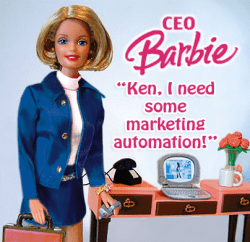Marketing Automation Begins With Consumer Intelligence
 Consumer intelligence comes first. Walmart pioneer Sam Walton was adequately prepared to open his Bentonville, Arkansas dime store to offer customers low prices on daily needs and even niceties for children. Through his small scope in customer interactivity, he was able to affect an entire community – and do so one customer at a time. In today’s budget conscious eco-friendly society, consumerists are jumping straight for automation of customer marketing, taking lesser amounts of time with each campaign in actually segmenting and learning the human’s decision changes before running their diatribe of marketing materials across social media and email marketing platforms. Before any successful automated marketing solution can transpire, proper intelligence into customer needs, desires and budget constraints needs to be passably performed prior to automation if companies want their overall ROAS (return on ad spend) showing up above the red.
Consumer intelligence comes first. Walmart pioneer Sam Walton was adequately prepared to open his Bentonville, Arkansas dime store to offer customers low prices on daily needs and even niceties for children. Through his small scope in customer interactivity, he was able to affect an entire community – and do so one customer at a time. In today’s budget conscious eco-friendly society, consumerists are jumping straight for automation of customer marketing, taking lesser amounts of time with each campaign in actually segmenting and learning the human’s decision changes before running their diatribe of marketing materials across social media and email marketing platforms. Before any successful automated marketing solution can transpire, proper intelligence into customer needs, desires and budget constraints needs to be passably performed prior to automation if companies want their overall ROAS (return on ad spend) showing up above the red.
Research Habitual Activities
Since marketing automation relies heavily upon proliferation of consumer purchase habits. Since in order for purchases to happen a customer will research, study and interact with certain questions, automated marketing programs will cease effectiveness if specific polls, studies and lead scoring aren’t performed prior to campaign launches. Demographical data, such as geo-specific customer locality and types of products or services being sought online, needs scored along with social media data to propagate factual information sets to be considered when marketing automation processes commence. Since humans are creatures of habit, spending the time to study these habitual activities will provide information your competition fails to collect due to haste.
Giving Away Reaps Equivocal Returns
Another heavily used and plausibly marketable source of collecting customer intelligence is through giveaways such as eBooks, DVD’s or coupons via email or snail mail. Through carefully asked questions placed in data collection fields, you can understand buying habits, collect useful customer database fillers and even learn frequencies of social media interaction – along with what sects are being connected with the most such as family, groups or games. The initial revenue drop experienced through giveaways can easily recuperate with valuable customer information collected.
View Tracking
Commonly called mystery shopping when done in person, another way one can implement customer intelligence into marketing automation betterment would be tracking views in online storefronts. By seeing what customers are looking at but not buying, product offers can be price-adjusted to placate customers who may show interest yet lack funding for your marketed products or services. Views can be tracked through cookie integration or server-side programming which self-tracks pages visited by IP address.
Customer Intelligence Is Obligatory
Marketing automation, undoubtedly, has won the aggressive marketing company and small business over with easy methodologies of handling multiple segments and niches. In order to ameliorate the human error factor, performing customer intelligence prior to sequestering marketing campaigns is an imminent marketing gorilla which must be adamantly tamed through more exacting data collection, scoring and redirection efforts. Without intelligible customer data practices, you’ll begin automating for naught. Spend the quality time in giving away samplings, asking direct questions and viewing your targeted niche from a distance to substantiate, then propagate, more effective marketing automation efforts altogether.










